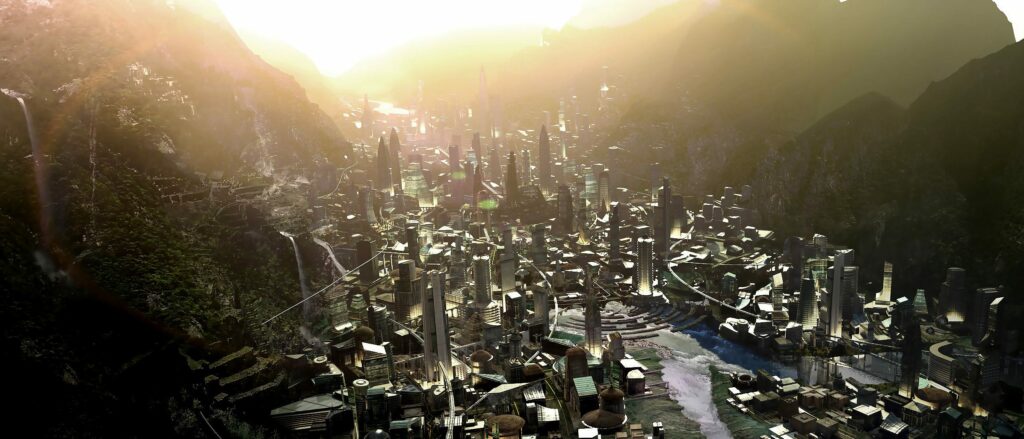In the course of my work at the Internet Society Foundation where I lead programs that support projects for Internet connectivity and access around the world, I’ve been learning a lot about satellites and the superterrestrial networks they enable. One of the most fascinating artefacts I’ve collected on this learning journey is a map created by a colleague’s husband. It models the real-time position of a constellation of satellites continuously orbiting the planet. This map uses open data of position and velocity from various public agencies and organizations to render an image of the planet blanketed by tiny dots representing satellites.
It’s striking to me at first because of the computing and network capacity required to create such a thing that updates as the milliseconds tick by. More specifically, though, I’m struck by the way the dots bring awareness to the possibility of open data to expand our thinking about our interconnected world. At the same time, they highlight the danger posed by the absence or manipulation of data which can leave us feeling isolated, disempowered, and disconnected. Without having seen this map would I have the ability to build the same understanding of satellite networks that I now have? And how does my ability to trust what this map represents impact the knowledge I am able to gain from it?
Tiny dots, big questions.
Thinking about this map makes me think about the benefits of open data to render our world in a more holistic and revolutionary way. Openness brings into focus the possibility of collaboration and interoperability on an extraterrestrial scale. How can the concept of openness redefine our understanding of knowledge as a public commons, rather than a fixed canon? Such a question helps us to re-centre values related to justice as we think not only of openness but of the accountability, it requires of us. Still, there is a nagging feeling I have about what makes this map incomplete when I think about sustainability and what it leaves out of the conversation.
For example, while I may know the positionality of a thousand Starlink satellites and can be assured that none of them will crash land on my house today, what do I know about the materials used to create those satellites, the labor exploited to produce them, the debris they leave behind, and the fossil fuel harvested and burned to get them into orbit in the first place?
And what do I know of the impact all of that will have on the chances of my house still standing 20 years from now when hundreds of thousands of more satellites are sent hurtling into space? After all, interoperable doesn’t equal accountability. Free doesn’t equal just. Open doesn’t equal sustainable.
I often turn to art when I encounter this type of conundrum, the type that is becoming more common with the expansion of digital culture and results from the fact that we have yet to grasp and grapple with the immense impact of digitalization on the physical world. For navigating the choppiness of this particular line of thought, I immediately think of Alma Thomas and her Space and Earth series of paintings.
Completed over 50 years ago, Almas Thomas, a Black American woman, living and working as an artist in Washington, DC during the Space Race of the 1950s, 60s, and 70s, creates a different type of map of the Earth–a map in abstract. With use of color and blending of the foreground with the background, Thomas renders the Earth in all of its imagined and real complexity, its interconnectedness, and the suggestion of a possibility that goes beyond the canvas. Thomas’ Earth paintings call on our imagination and consideration of a relational and relative planet. One that is not absolute, not defined by position and velocity, but more dependent upon perspective and impression.
Thomas’ technique reveals a path to thinking about openness and its relationship to sustainability. That path is lined with color and light, nuance and subtlety, but crucially, it is also deeply connective. Rather than depicting the planet as a solid structure made up of discrete swaths of color, she envisions an Earth made up of minute strokes, where each stroke compounds the others in order to make meaning.
Albert Einstein is often quoted as saying “the most powerful force in the universe is compound interest.” Thinking of sustainability as a compounding interest formula, as a value of future returns, creates the space to engage the concept of openness in sustainability as Thomas engages technique in her vision of the planet.
A new calculus with new meaning emerges:
In this equation, sustainability describes the future value for our planet we hope to attain, while openness represents our initial investment. Trust takes the place of the constant meaning that trust is a critical facilitator of openness and vice versa. That trust is impacted by factors like justice which describe the rate of our returns– the values we hold and how we morally and ethically exercise them or how we institutionalize them in our societies and communities. Those returns, positive or negative, are added to humanity’s ledger every day over time. Finally, that impact is further compounded as we look year over year to the future and to generations to come.
Openness, as a concept, describes only a state, that without imbued values, only gets us so far. Open data remains neutral until we decide to make it otherwise; until we create meaning by connecting each data point to a context, a story, or a history rendering them more accountable and more just over time. This compounding view may help us to chart our path to a more sustainable future.
About the Author
Shayna Robinson is a futurist and tech environmentalist. Shayna embodies this through her work as Program Director at the Internet Society Foundation where she leads grantmaking efforts.


